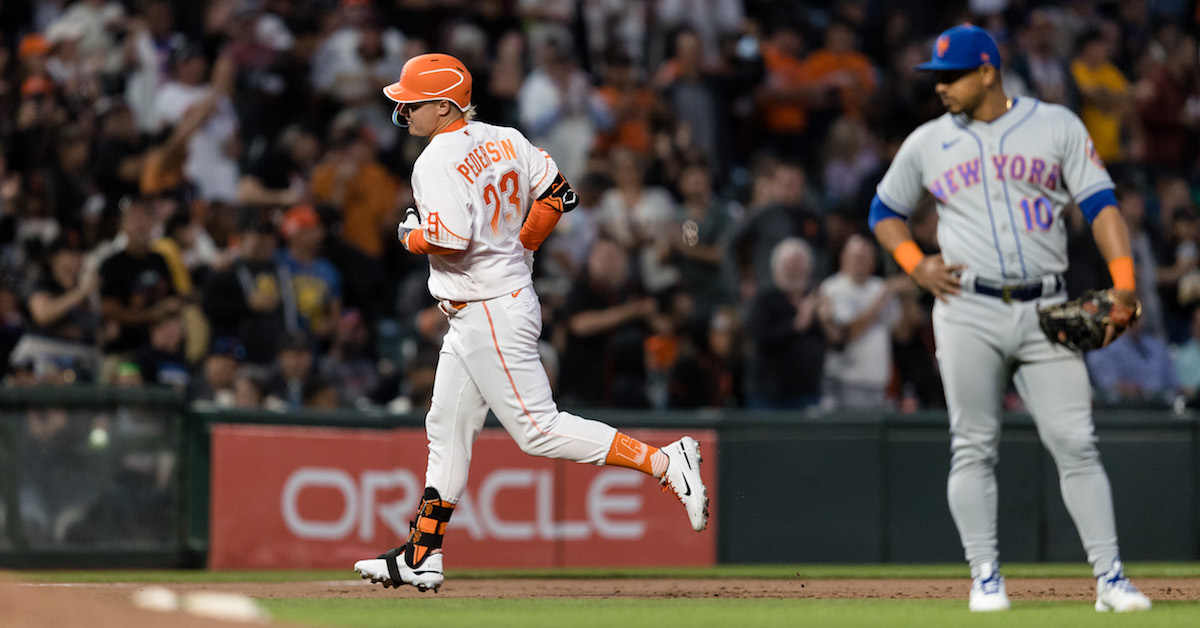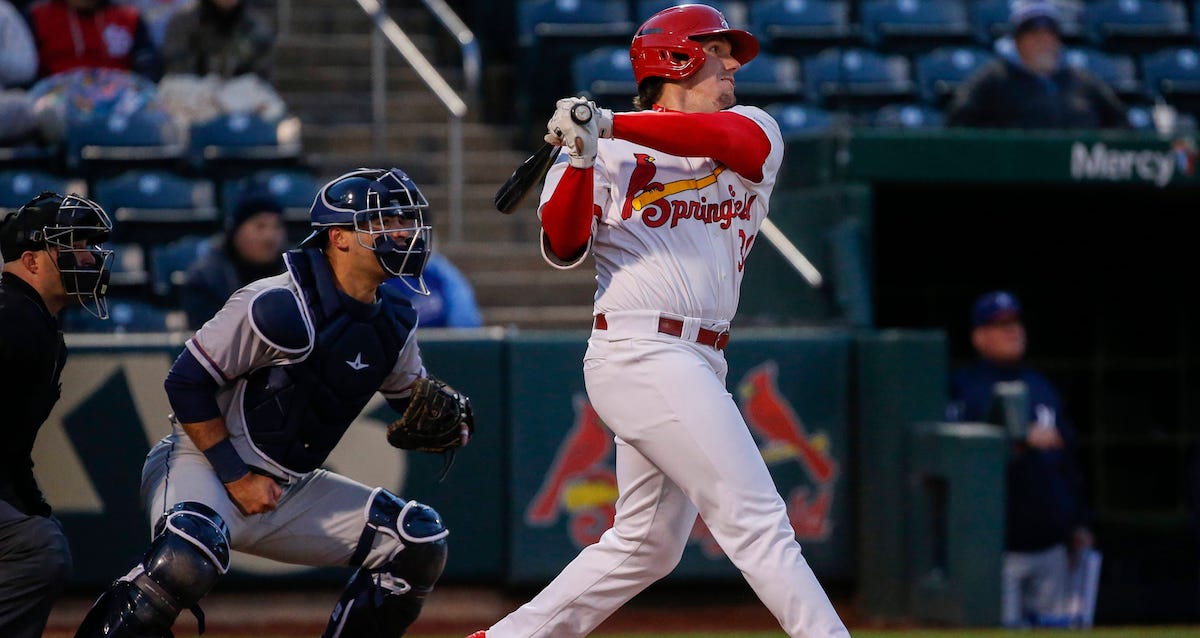For Slumping Mets, Help on the Horizon in Scherzer, deGrom Returns

For the Mets, help is on the way at long last in the form of a pair of multiple Cy Young award winners. On Sunday, Jacob deGrom dominated in his first rehab start for the team’s Single-A affiliate, his first competitive start in nearly a year, and on Tuesday, Max Scherzer is scheduled to start for the big club for the first time in nearly seven weeks. The two aces should provide a boost for a team whose lead in the NL East has dwindled since reaching double digits at the end of May.
The 34-year-old deGrom, who had been sidelined since March 27 due to a stress reaction in his right scapula, struck out five of the six hitters he faced for the St. Lucie Mets, reaching 100 mph with his four-seam fastball against the first three of those hitters. Wearing a garish camouflage-and-stars-and-stripes jersey, he threw 24 pitches, 18 for strikes; the only blemish on his performance was hitting the Jupiter Hammerheads’ Ian Lewis in the foot with a cutter.
That was deGrom’s first competitive appearance since last July 7, interrupting what had the look of a season for the ages. Through 15 starts and 92 innings, he had pitched to a 1.08 ERA and 1.24 FIP, striking out 45.1% of all hitters, walking just 3.4%, and averaging 99.2 mph with his fastball. His elbow couldn’t handle the stress, though not until September was his “inflammation” revealed to be a low-grade sprain of his ulnar collateral ligament. The two-time Cy Young winner, who underwent Tommy John surgery back in October 2010, shortly after completing his first professional season, thankfully did not need surgery to heal this time around. “I have been told my UCL is perfectly fine,” he said in mid-March, before his shoulder injury.
By his own description at least, his shoulder is fine as well. “I felt like I had control of everything — the main thing was trying to locate the fastball and pitch off that. Everything felt good,” he said after Sunday’s start. “[My shoulder] feels 100 percent. Because it was bone… you can’t really push it. I had to wait until the bone was healed and move forward from there.”
DeGrom said he expects to make at least one more start for St. Lucie. He’ll probably need a couple of additional turns at higher levels to build his pitch count to the point of a late-July return to the Mets. Expecting him to pick up where he left off a year ago is probably a recipe for disappointment given how far off the charts that performance was, but the bar for him to improve the team’s outlook isn’t nearly that high.
As for Scherzer, he pitched to a 2.54 ERA and 2.96 FIP and struck out 30.6% of hitters through his first eight starts as a Met before straining an oblique muscle in his May 17 start. His 47-day stay on the injured list is the longest of his major league career, capped by a pair of starts for the Double-A Binghamtom Rumble Ponies late last month, with pitch counts of 65 and 80. The 37-year-old three-time Cy Young winner additionally made quite an impression by treating his teammates to a feast of bone-in ribeye, filet mignon and lobster that reportedly cost upwards of $7,000; he also purchased a pair of AirPods headphones for each teammate. In Tuesday’s return against the Reds, he’s expected to throw about 90 pitches over six innings.
When Scherzer landed on the IL, the Mets were 26–14, seven games ahead of the pack in the NL East. By the end of the month, they were 34–17, their third-best mark through 51 games, behind only their celebrated 1986 and ’88 teams. Additionally, their 10.5-game lead through the end of May was the third-largest of any team since division play began in 1969, trailing only those of the 2001 Mariners and ’17 Astros. The Mets couldn’t maintain that pace in June, however, going just 13–12 against a difficult schedule that included the Dodgers, Padres, Brewers, and Astros, against whom they went a combined 5–9. Though they’ve perked up via a 3–1 start in July, the surges of the Braves (24–6 since the end of May) and Phillies (21–9 in that span) have narrowed their cushion to four games.
Through the end of May, the Mets had outscored opponents by nearly a run and a half per game, but since then, they’ve been outscored by about four-tenths of a run per game:
| Period | W | L | Win% | RS | RA | PythW-L% |
|---|---|---|---|---|---|---|
| April/May | 34 | 17 | .667 | 5.22 | 3.80 | .641 |
| June/July | 16 | 13 | .552 | 4.07 | 4.48 | .456 |
During both segments of the season, they’ve outplayed their Pythagorean winning percentage, with a trio of particularly lopsided June losses (13–2 to the Padres on June 8, 10–2 to the Brewers on June 15, 9–1 to the Astros on June 28) distorting their run differential. Take those away and they have a 4.35 to 3.77 advantage in per-game scoring since the start of June, as well as a .565 Pythagorean percentage. Alas, those games did happen, they did count, and the pitching staff is showing some wear and tear:
| Starters | ERA | FIP | K% | BB% | HR/9 |
|---|---|---|---|---|---|
| April/May | 3.83 | 3.76 | 22.4% | 6.7% | 1.02 |
| June/July | 4.53 | 3.95 | 26.9% | 6.9% | 1.45 |
| Relievers | ERA | FIP | K% | BB% | HR/9 |
| April/May | 3.50 | 3.52 | 27.7% | 9.3% | 0.99 |
| June/July | 3.79 | 4.34 | 25.8% | 9.5% | 1.44 |
Most of the deterioration in the team’s pitching owes to the long ball, though to be fair, there’s a lot of that going around, as the major league home run rate has risen from 1.02 per nine innings in April and May to 1.21 per nine since. The problem has been particularly acute for Carlos Carrasco (2.04 per nine in June and July), Tylor Megill (2.70) and Trevor Williams (4.26) — the last two in particularly small samples, admittedly — and has driven the overall downturn in their performances.
The 35-year-old Carrasco is the only Met to make a full complement of starts (16) thus far, that after making just 12 starts last year due to a right hamstring injury. He pitched to a 3.98 ERA and 2.79 FIP through the end of May thanks to improved results on his slider and changeup, both of which got whacked around last year. While he began June with strong starts against the Nationals and Padres, he was bombarded for seven homers and 19 runs in 17.2 innings over a four-start stretch against the Angels, Marlins, and Astros (twice), allowing more runs than innings pitched in all but the Miami start. He did pitch well against the Rangers on Sunday (5.2 innings, one run, eight strikeouts), lowering his ERA to 4.64 and his FIP to a more respectable 3.68, but batters have slugged .439 or better against all four of his main offerings (four-seam, sinker, slider, and changeup) in June and July, a trend that could be hazardous if it continues.
The 26-year-old Megill turned in some impressive outings early in the season, highlighted by his throwing the first five innings of the team’s combined no-hitter against the Phillies on April 29, but after being torched for eight runs in 1.1 innings on May 11, he landed on the injured list with biceps inflammation. Upon returning a month later, he yielded six runs in 6.2 innings over two starts, suffered a shoulder strain and was shut down; he’s now on the 60-day IL, meaning that the earliest he could return would be mid-August. As for the 30-year-old Williams, he’s been very useful out of the bullpen (2.00 ERA, 2.62 FIP in 18 innings), but his performance in the rotation (5.86 ERA, 6.27 FIP in 27.2 innings) has been erratic at best.
Fortunately, Taijuan Walker has done good work (2.72 ERA, 3.09 FIP) in making 14 starts, and Chris Bassitt has been solid (4.01 ERA, 3.92 FIP), though the latter just landed on the IL in Friday with what is reportedly a bout of COVID-19. David Peterson has done the bulk of the fill-in work in the absence of Scherzer and other injured pitchers and has been the unit’s unsung hero, posting a 3.24 ERA and 3.78 FIP in 58.1 innings.
For as fluffed-up as the Mets bullpen’s ERA has been since June, there’s been some very good news, in that Edwin Díaz has been absolutely lights out. Since blowing a save against the Giants on May 24, he’s allowed just one run in 13.2 innings, pitching to a 0.66 ERA and -0.25 FIP (yes, negative) and striking out 54.7% of batters faced. Overall, he owns a 1.93 ERA and 1.63 FIP and has allowed just one barreled ball all season. Meanwhile, Adam Ottavino is showing signs of returning from his wilderness years with the Yankees and Red Sox; since the start of June, he’s posted a 0.71 ERA, and overall for the season he’s carrying a 2.67 ERA and 3.28 FIP. On the down side, the struggles of lefties Chasen Shreve and Joely Rodríguez stand out, with the pair combining to allow 15 runs in 17 innings since the start of June. As a group, Mets lefty relievers (mainly that pair plus a couple of spot appearances) allowed a .283 wOBA through the end of May, but that’s up to .363 since, giving general manager Billy Eppler something to add to his trade deadline shopping list.
The Mets’ offense isn’t blameless when it comes to the team’s recent struggles, dipping from a 116 wRC+ through the end of May to 99 since. Unlike the rotation, there’s no cavalry on the immediate horizon, but given the 45 wRC+ they’ve received from catchers Tomás Nido, James McCann, and Patrick Mazeika, the possibility of recalling top prospect Francisco Álvarez offers some appeal. The 20-year-old backstop, who placed seventh on our preseason Top 100 Prospects list, was just promoted to Triple-A Syracuse, however, and the Mets aren’t likely to rush him to the majors.
In the grand scheme, a Mets team that has gotten a combined eight starts from its two aces through the first half of the season has played .625 ball nonetheless. The team already owns a 97.9% chance at a playoff spot and a 51.7% chance at a first-round bye, and the returns of Scherzer and deGrom will soon overshadow their June swoon.







